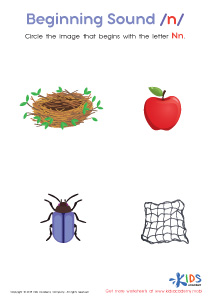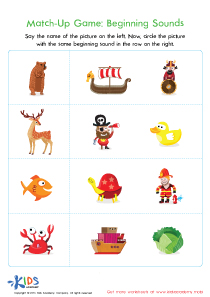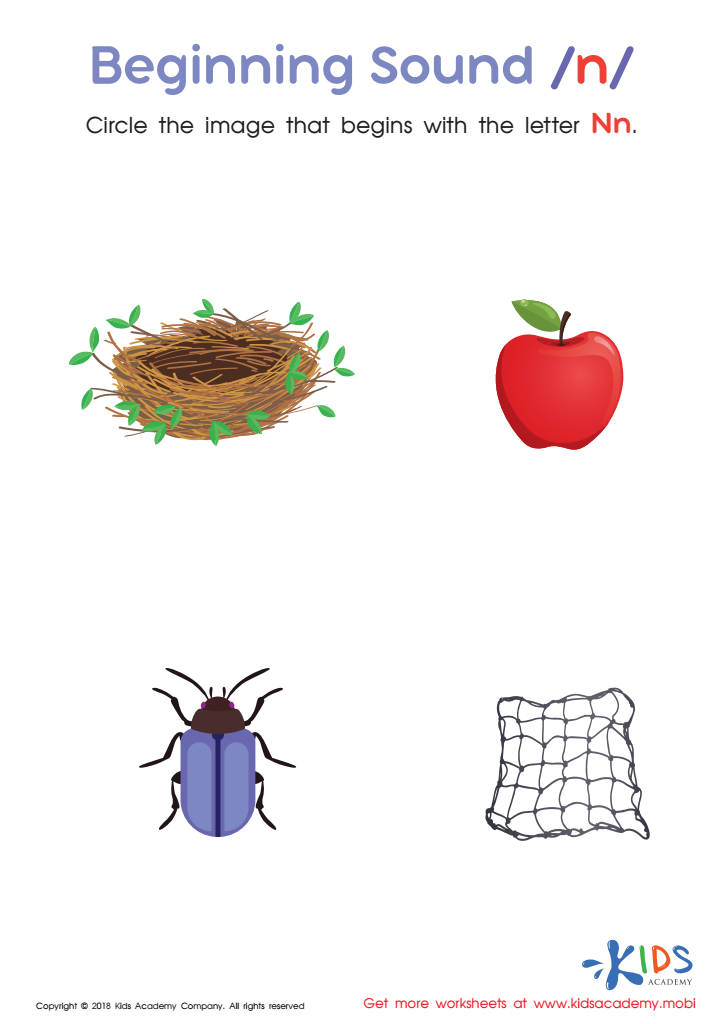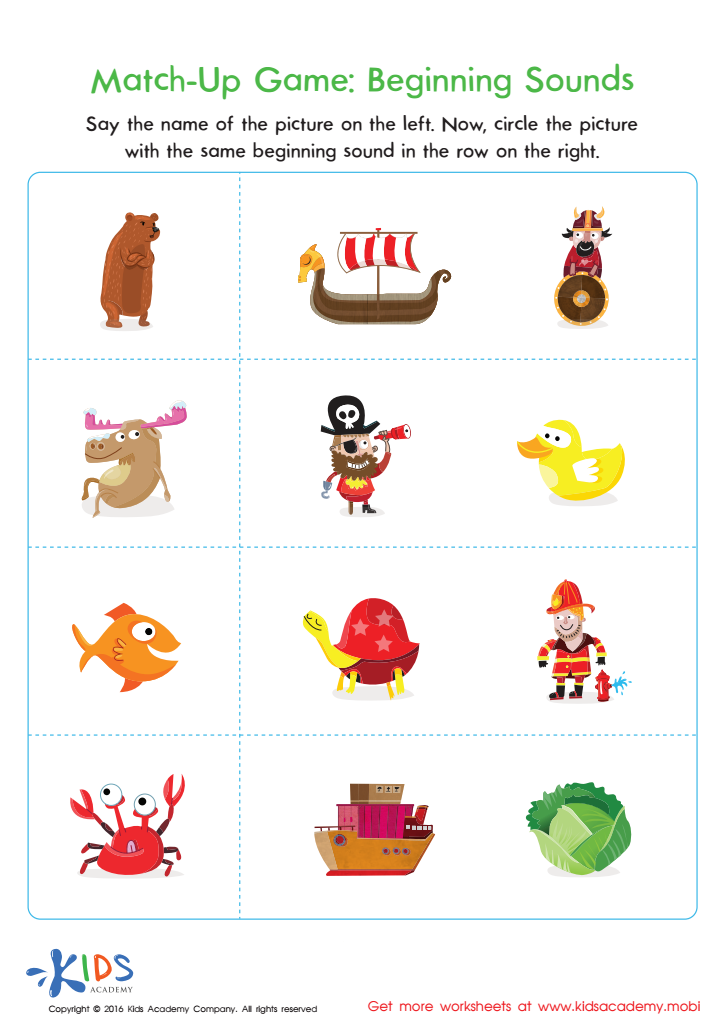Identify Beginning Sounds in Words - Lesson for Grade 1, Chapter - Segmenting Words into Sounds
In the lesson "Identify Beginning Sounds in Words," Grade 1 students embark on an essential journey into the world of phonological awareness, specifically focusing on segmenting words into sounds. This foundational skill is crucial as it lays the groundwork for reading fluency and comprehension, key components of literacy.
Throughout this lesson, students will learn how to attentively listen and identify the initial sounds in words, with a spotlight on the sound "n". For instance, recognizing the "n" sound at the beginning of words like "nest" or "night". This skill fosters an understanding of how sounds correlate with letters, an essential aspect of phonics which is pivotal for decoding new words.
The activities designed for this lesson, including the "Beginning Sound ‘n’ Worksheet" and the "Match–Up Game: Beginning Sounds Worksheet", offer engaging, hands-on practice. These activities not only reinforce the lesson's objectives but also enhance students' ability to differentiate sounds, a skill that significantly contributes to their reading abilities and overall language development.
Understanding and identifying beginning sounds in words is important because it helps young readers break down words into manageable parts, making reading a less daunting task.


-
Activity 1 / Beginning Sound «n» Worksheet
Help your emerging reader learn to recognize the beginning consonant sound «n» with this free PDF worksheet. They'll strengthen fine motor skills tracing circles around words that have initial consonant «n» at the beginning, and they'll do so with confidence because the pictures are so clear and engaging. It's just the right amount of practice for a beginning Phonics learner to feel success!
-
Activity 2 / Match–Up Game: Beginning Sounds Worksheet
Most of us have been out of the classroom long enough to forget some of the earliest subjects we studied in school. One of those long-forgotten subjects is phonics, which plays an integral role in helping little talkers become little readers and writers. Phonics is the relationship between letters and sounds in language. This means that kids need to learn common words and which letters they start with.
Since phonics is so important, you might be wondering how and where to start with your little learner. Look no further! This beginning sounds match-up printable is the perfect way to start practicing phonics with your future reader.
Here’s how this match-up game can benefit your child:
• Since there are no hints, your child will use their memory and cognition to think about what letter each picture begins with. This means that your child must draw solely from memory, thinking through each picture to determine what letters are associated with which words. This allows your child to develop stamina and focus.
• Your child will notice that no matter what the picture is, if the word starts with the same letter, it’s a match. Take your child past simple classification and categorization. Now your child must categorize pictures based on different rules—early phonics skills.
It’s vitally important to teach children to solve problems mentally. Once children master beginning sounds, they can move on to recognizing sounds and letters together in print—building a solid foundation for reading and spelling skills.


